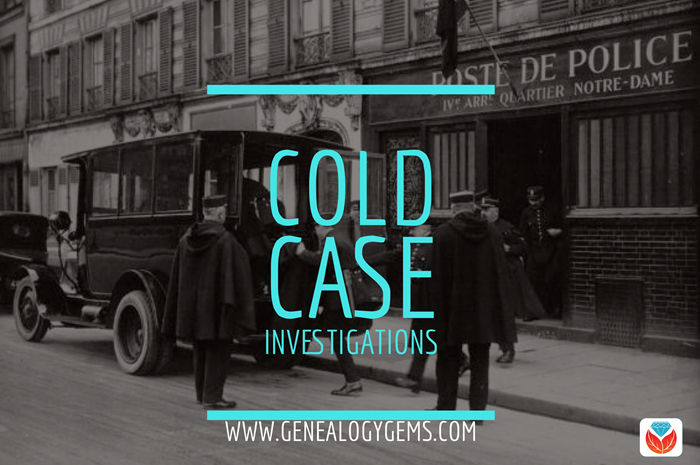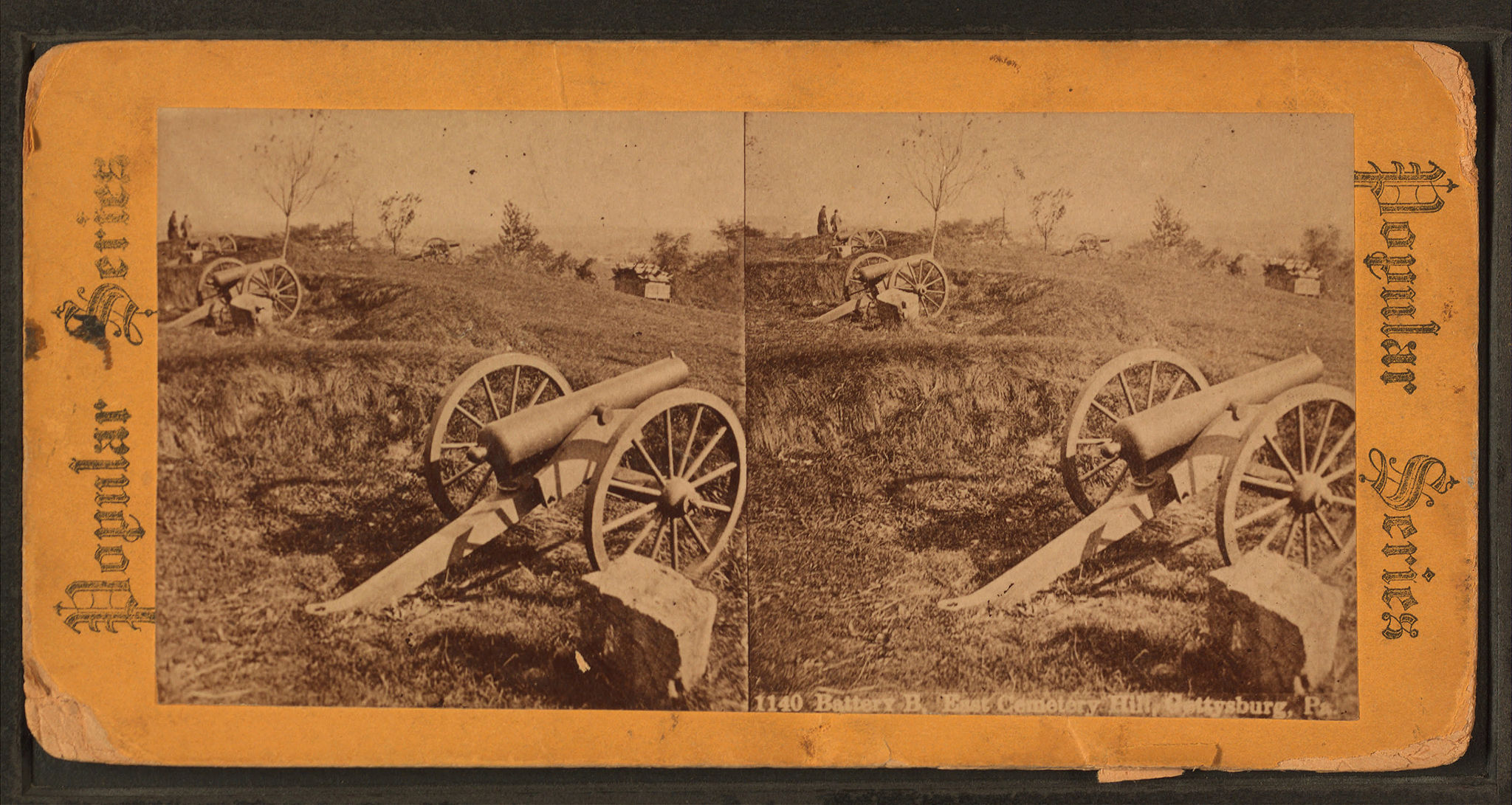by Lisa Cooke | Apr 30, 2014 | 01 What's New, Family Tree Magazine, Research Skills, Technology

We’ve all got genealogy brick walls in our research: family mysteries we have so far found unsolvable. In the new issue of Family Tree Magazine (May/June 2014), Lisa’s got a great article packed with 14 strategies for SOLVING those perplexing questions.
The article is “Warming Up a Cold Case,” and it’s got a fun criminal investigator theme. I won’t give all 14 of her tips away, but some of my favorites include re-examining old evidence, finding new witnesses and going on a genealogical stakeout. And one that made me laugh out loud: “Post wanted posters.” And then I just had to put my ancestor’s face on a wanted poster (right).
How do you really create a wanted poster for your ancestor? Lisa shares these ideas in the article:
1. Post their names on genealogy online message boards (like at Ancestry.com). But fill in those “wanted” details. Instead of height, weight and hair color, add what you know about their births, marriages, deaths, family relationships and residences.
2. Post your family tree online at any number of sites for free. Sites organize their trees in one of two ways. Ancestry.com, MyHeritage.com and others can i buy medication without insurance offer the individual tree model. You upload (or build on the site) and maintain your own tree. FamilySearch.org, WikiTree, Geni.com and WeRelate.org are community tree sites. You may work from a view of your own tree, but the site is merging your tree with others behind the scenes to create a single world family tree (each does this a slightly different way).
3. Start your own family history blog. Write keyword-rich blog posts that make it easy for Google searchers to find your ancestors there. Check out Lisa’s free four-part series on how to create a genealogy blog at the Genealogy Gems YouTube Channel. This link will take you to the 4 part video playlist.

Find the entire article in the May/June issue Family Tree Magazine. Even better: Genealogy Gems Premium Members can also watch Lisa’s one hour video class Brick Walls: Cold Case Investigative Techniques. Not a Premium Member yet? You’re missing out on 24/7 access for a year to some of her most popular classes on Google, Google Earth, organization, Evernote, newspaper research and more. Learn more about Genealogy Gems Premium Membership here.
by Lisa Cooke | Jun 4, 2015 | 01 What's New, Family Reunions, Google, History, images, Newspaper, Technology, United States, Video
 It’s common to hear of long-lost relatives who rediscover each other online or through DNA tests. But nearly 100 years ago, another new technology–the radio–united a pair of long-lost siblings 40 years after one ran away.
It’s common to hear of long-lost relatives who rediscover each other online or through DNA tests. But nearly 100 years ago, another new technology–the radio–united a pair of long-lost siblings 40 years after one ran away.
This newspaper article reports that Alonso Jones’ children were sitting around one day in 1926 listening to the radio. Then they heard the announcer say, “Alonso Jones, wherever you are, listen…Your sister wants to see you at Worthington, Ohio. She has not seen or heard from you in forty years. You were born at Antiquity, Meigs County, Ohio, at the time of the Civil War….”
“You were reared by Captain William Roberts, an Ohio River flat boat man. You went with him on a produce boat when you were a boy and ran away while the boat was lying at the bank in Arkansas.” The article reports that the man telegraphed his sister and arranged to meet her. What a great story! And what a great family history find for anyone researching Alonso Jones or his sister, Mrs. Robert Eakin, or his guardian, William Roberts!

Salt Lake Tribune, January 1, 1926, p. 1. Digitized at Ancestry.com.
This article illustrates two fantastic tips for newspaper searching.
FIRST, I originally found this article in the Salt Lake Tribune, digitized at Ancestry. I was struck because the story was about people from Ohio and Arkansas–not Salt Lake. As we still see today, local news stories of the past were often reported in other cities. When searching digitized newspapers, don’t automatically discount search results that otherwise seem right but appear in out-of-town papers.
SECOND, curious about this story, I used Lisa’s search strategies from her book, The Genealogist’s Google Toolbox to search for more information about the people mentioned in the article. I got a hit on a possible match for the riverboat caption. I also found that the Google News Archive had this same article in The Evening Independent in St. Petersburg, Florida (shown above). The copy above is much clearer to read and slightly different. For these reasons, it can sometimes be worth looking for duplicates of news articles and/or obituaries for your relatives.
 Want to learn more? Genealogy Gems Premium members can also listen to Premium podcast episodes GGP 36 and 3GGP 37 about newspaper searching (Lisa talks about Google News Archive in episode 37). Or get the ultimate scoop in How to Find Your Family History in Newspapers! It’s packed with inspiring family history finds in the newspaper and all the tools you need (online and offline) for finding your own.
Want to learn more? Genealogy Gems Premium members can also listen to Premium podcast episodes GGP 36 and 3GGP 37 about newspaper searching (Lisa talks about Google News Archive in episode 37). Or get the ultimate scoop in How to Find Your Family History in Newspapers! It’s packed with inspiring family history finds in the newspaper and all the tools you need (online and offline) for finding your own.
by Sunny | Jun 22, 2018 | 01 What's New, British, Findmypast, Irish, Scottish Genealogy
New U.K. suffrage records are online—and so is a related historical experience at Google Arts & Culture! Also: U.K. slavery notices, Scottish memorial inscriptions, British newspapers, and Irish school records. Featured: The Suffragettes and the Road to Equality...
by Lisa Cooke | Nov 27, 2013 | 01 What's New, History, Newspaper
We just celebrated the 150th anniversary of President Abraham Lincoln’s now famous speech at the dedication of the Gettysburg Cemetery, a national

Battery B, East Cemetery Hill, Gettysburg, Pa, from Robert N. Dennis collection of stereoscopic views. Wikimedia Commons Image.
cemetery created at the site of one of the bloodiest battles of the Civil War.
Presidents give a lot of speeches–and most are never remembered. But the Gettysburg Address, as it came to be known, was immediately appreciated as something special. The press described it as “a perfect gem…unexpected in its verbal perfection and beauty.”
150 years ago today The Caledonian newspaper reprinted the entire speech. (Don’t stop there: you can read high-resolution digital versions of all five of Lincoln’s handwritten copies of the address and learn all kinds of things about the Address at the Google Cultural Institute.
The Gettysburg Address is part of the genealogy of every American whose ancestors lived through the Civil War. Few were unaffected by the War, whether they lived in the North, South or further West. Certainly its tensions and outcomes shaped the nation’s economy, social mores and more for decades to come.
Life-shaping battles and other events–and responses to them like the Gettysburg Address–appear in newspapers. That’s why I love teaching genealogists about using newspapers, and why I wrote the book How to Find Your Family History in Newspapers. The “daily news” of the past tells us what people were doing and saying and why.
 If you’re wondering what the Google Cultural Institute (GCI) is, you’re not alone. It’s a less-heralded but really important part of what Google offers. The GCI is a Google effort launched in 2011 to “make important cultural material available and accessible to everyone and to digitally preserve it to educate and inspire future generations.” (From GCI FAQ.) As of mid-2013, over 6 million photos, videos and documents are on the site, including all kinds of international cultural materials. If you haven’t explored the many Google tools helpful to genealogists, I suggest you read my book The Genealogist’s Google Toolbox. Either of these books will make a great holiday gift to yourself–and your research!
If you’re wondering what the Google Cultural Institute (GCI) is, you’re not alone. It’s a less-heralded but really important part of what Google offers. The GCI is a Google effort launched in 2011 to “make important cultural material available and accessible to everyone and to digitally preserve it to educate and inspire future generations.” (From GCI FAQ.) As of mid-2013, over 6 million photos, videos and documents are on the site, including all kinds of international cultural materials. If you haven’t explored the many Google tools helpful to genealogists, I suggest you read my book The Genealogist’s Google Toolbox. Either of these books will make a great holiday gift to yourself–and your research!







 If you’re wondering what the Google Cultural Institute (GCI) is, you’re not alone. It’s a less-heralded but really important part of what Google offers. The GCI is a Google effort launched in 2011 to “make important cultural material available and accessible to everyone and to digitally preserve it to educate and inspire future generations.” (From GCI
If you’re wondering what the Google Cultural Institute (GCI) is, you’re not alone. It’s a less-heralded but really important part of what Google offers. The GCI is a Google effort launched in 2011 to “make important cultural material available and accessible to everyone and to digitally preserve it to educate and inspire future generations.” (From GCI